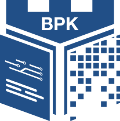Bibliometric analysis
Bibliometric analysis is a method of exploration and quantitative analysis of the authors' publishing achievements. It may concern the publication of one or a group of authors. The unit of measurement is the bibliographic description of the publication or its selected elements. The analysis is based on selected databases. In a broader context, bibliometric analysis also includes an analysis of the relationship between the elements covered by the study (the so-called science mapping, used for science evaluation at the level of a scientific unit, discipline, country, etc.). The analysis uses various databases and bibliometric indicators.
Information Services Department performs bibliometric analyses of the publication output of the CUT authors and provides bibliometric consultations. The sources of data for bibliometric analysis carried out at Information Services Department are databases: CUT Academics Bibliography (BPP PK) – Knowledge Platform of the Cracow University of Technology (new window), Web of Science (WoS), Scopus and optional author profile data in GoogleScholar database analysed in Publish or Perish. (new window)
Evaluation of the AUTHOR's publication output
Bibliometric indicators
- The h Index (Hirsch index) – a coefficient introduced in 2005 by Jorge E. Hirsch, which determines the importance and relevance of all scientific works by a given author. A way to measure scientific achievements including number of publications and number of citations. It is designated for an individual, team or institution.
The h index is N if the number of citations of N publications is equal to or greater than N.
Due to the great popularity of the h index, the function of its calculation on the resource is available in WoS, Scopus, Google Scholar (new window), Google Scholar Citations (new window) databases.
In different sources the h index is different, according to the type and amount of resources indexed in the selected database.
- i10-index – introduced and calculated automatically in Google Scholar since 2011, determines the number of publications that have received at least 10 citations (excluding self-citations).
- Summary Impact Factor of publications of a given author – is calculated taking into account the articles of a given author published in journals with IF coefficient, according to the following formula:
Total IF = Ax(n) * IFx(n) + Ay(n) * IFy(n) + Ay(m) * IFy(m) + …
n, m – year of publication of the author's article / year for which the IF of the journal was calculated
Ax – number of articles by the author published in journal x in a given year
Ay – number of articles by the author published in journal y in a given year
IFx – IF of a journal x calculated for a given year
IFy – IF of a journal y calculated for a given year, i.e. we multiply the IF of a given journal from a given year by the number of articles published by the author. In the case of articles from several journals, we add everything.
Altmetric indicators – measure scientific activity in the digital world; reflect the reach of scientific publications in the scientific world. The sources for alternative metrics are social media, blogs and science sites, overlooked as sources for classic metrics.
Evaluation of the author's scientific output in selected databases according to various criteria:
- In the Scopus database, see: Scopus LibGuide: Metrics (new window) and SciVal (new window)
- in the WoS database and in InCites Benchmarking & Analytics, see. Authors/Researchers: What is your impact? (new window)
Evaluation of a researcher at the Cracow University of Technology:
-
Order No. 111 of the Rector of the CUT dated 20.12.2019 marked R.0201.133.2019 (new window) on the principles and criteria of periodic evaluation of academic staff.
-
Resolution of the Senate of the CUT of 21.12.2016 No. 106/o/12/2016 (new window) on templates of questionnaires for periodic evaluation of academic teachers.
-
Previous resolutions can be found in the CUT Public Information Bulletin (BIP PK) (new window).
Bibliometric analysis of scientific publications of the CUT authors
The bibliometric analysis performed at Information Services Department includes:
-
list of publications registered in the CUT Academics Bibliography (BPP PK) – Knowledge Platform of the Cracow University of Technology by type of publication along with information about indexing in WoS and Scopus databases and publishing model (Open Access);
-
summary of impact factor (IF) values of titles of publication sources (journals) by year according to Journal Citation Report (JCR);
-
calculation of scores for publications according to the guidelines of the Ministry of Science and Education for individual years (without distribution of points among co-authors);
-
citations analysis (Web of Science Core Collection, Scopus, optional Google Scholar);
-
Hirsch index (the h-index) (Web of Science Core Collection, Scopus, optional Google Scholar).
The analysis is carried out free of charge at the author's request, usually in connection with the preparation of documentation for habilitation or professorship proceedings, an application for a research grant or an application for a competition.


